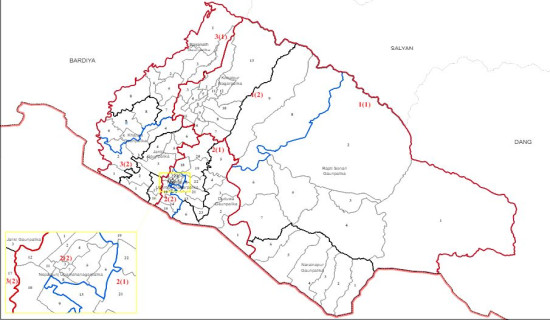- Saturday, 20 April 2024
Keep Tradition Alive
Dixya Poudel
If you happen to be offering a prayer to the deities in a temple during the month of Shrawan, you will find girls and women adorned in green and red. Green and red bangles clink together. And red and green shalwar, kurtha and sari wrap around a woman’s figure. It isn’t a coincidence. In Nepal, Shrawan is the month in which women worship Lord Shiva and add a touch of green to their wardrobe in hopes of appeasing the Lord Shiva. As such, Shrawan heralds the start of the festival season.
After the holy month of Shrawan, Teej arrives in much fanfare which is followed by Dashain and Tihar. It isn’t thus surprising that Shrawan is a singular month for devoted Hindus. But what is surprising is the unrelenting devotion of devotees in an era that is said to be marked with atheism. Nepali youth are quite in tune with their religion, tradition and culture, but there is a marked difference between the way they celebrate and the way their parents do.
Today, girls wear outfits with a splash of green as well as red and green jewelry styled to the latest fashion in Sharwan. They take photos and videos, posing in front of a temple and post it to the social media. Particularly TikTok is the most preferable social media for youths and Nepali youths are no exception. If you see a group of girls singing and dancing near a temple, a monument or the Durbar Square, you might wonder what they are up to. Most likely, they could be filming a vlog to be posted online.
And these days, festivals are celebrated with much enthusiasm by the Nepali youth although with a few additional touches of their own. They may or may not fast. They may or may not light a diyo every morning and evening but they do have a respect for religion and a sense of the traditions. Nepali values, tradition and culture aren’t lost to the youth; instead they have combined the old and the new, the traditional and the modern and the sacred and the divine.
While their way of celebrations might have changed a few norms, the essence remains the same added with pragmatism of keeping up the traditions for generations to come. In Dashain you can see families shuttling from one place to another, to give and receive blessings and tika dressed to the nines while those who are abroad make sure that they receive blessings virtually. It applies to most festivals in Nepal which are today sustained by a youth who knows the rites and ritual well even if they are living abroad.
Social media has become the domain of the youth and it has brought celebrations of festivals to the screens. The smartphones light up the celebrations in the virtual domain and modernism is balanced with the traditional. Nepali youths tend to travel abroad for higher studies and might prefer to call themselves ‘a global citizen’ but they are knowledgeable about their national traditions. They might wear traditional or modern attire.
Further, they might be quite modern in their ways and mightn’t follow the rituals by the book. But they know that their ties to Nepal will always remain unwavering and strong whether at home or abroad.













-original-thumb.jpg)

